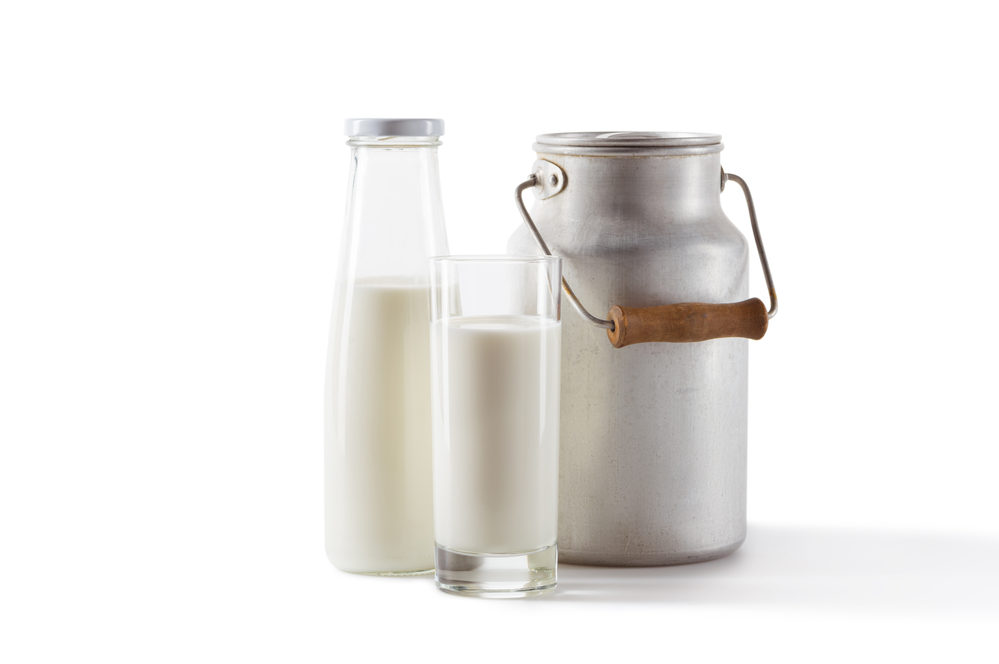Does milk change according to the mother’s diet? Should mothers be drinking more milk while breastfeeding? Some of the ingredients in human milk are present in constant proportions for all breastfeeding mothers and at every feed. Others may vary as a result of the maternal diet. Here’s the skinny on drinking milk while breastfeeding.
We know, for example, that the type of fat in the maternal diet is closely related to the type of fat in the milk the mother produces, although the caloric content of human milk is fairly consistent. Breastfeeding on cue / feeding on demand ensures that the baby will receive all he needs within the day in order to grow well and remain healthy.
Children acquire their family’s food habits and preferences gradually. A baby first tastes this food via the amniotic fluid before birth, and later, through his mother’s milk. Many of our ideas about what foods we prefer or avoid are culturally determined and foods that are considered unsuitable or even harmful for breastfeeding mothers in some cultures are considered a normal and healthy part of their diet in others.
Do I need to drink milk to produce milk?
Human beings are the only animals that consume the milk of other animals. In no other species do the young consume milk after infancy. No other mammalian mothers drink milk, yet they all produce milk adapted to the needs of their young. They obtain all the necessary ingredients to produce milk from their diet. It’s useful to remember that there are whole cultures where the people traditionally do not drink milk or eat dairy products. In some languages, the traditional word for milk means only human milk, and the idea of milk from another mammalian species is totally new to the culture. Calories from milk and cheese are an important part of the diet of many people. Others thrive without milk or cheese. In any case, there is no need to introduce these foods into the diet or to increase their consumption, especially if the mother does not like or does not tolerate them.
How can I be sure to get enough calcium if I can’t include milk and dairy products in my diet?
All adult mammals , including humans, obtain sufficient calcium for their needs from the foods they eat, although they do not consume milk after the first few years of their lives. Naturally, calcium is an important ingredient of a balanced diet. Cow’s milk and dairy products are sources of this mineral for many people. There are many other good sources of calcium, including:
- Sheep or goat’s milk and cheese.
- Canned fish, such as salmon or mackerel, which contains bones that become soft during processing and are easier to eat. Anchovy paste (made from whole anchovies) also has a high calcium content.
- Whole grains and whole grain flours.
- Green, leafy vegetables.
- Almonds or other types of nuts and dry fruit, such as walnuts and dry figs. (It’s important to consume these in moderation because of the high caloric content of these foods.)
Some foods traditionally recommended to breastfeeding mothers in different countries around the world are also rich in calcium. Chicken broth, where the chicken is cooked for long time to soften the bones, is an example. In different parts of the world where people do not traditionally consume milk products, or make very sparing use of them, other vegetable and mineral sources exist that will enrich the diet with calcium. Some examples include:
- Sesame seeds, which can be eaten whole, in the form of tahini (sesame butter) and gomasio (a salt substitute that contains sesame seeds and salt), or can be added to many foods. They should be chewed well in order to increase the ability of the body to utilize the calcium they contain.
- Tofu or soy cheese, which is often coagulated using a calcium-rich substance and is an important part of the traditional diet in Japan, China, and other countries.
- Tortillas that are made using lime-processed corn are a good source of calcium in Mexican diets.
- Some types of algae (sea vegetables, such as wakame) fermented foods (miso), and seasonings including tamari and soy sauce can also contribute to enriching our diets with calcium, as well as many other minerals that are especially important to a breastfeeding mother.
How much milk do I need to drink while I am breastfeeding?
In general, drinking to thirst is a good rule. You are usually drinking enough if your urine is light coloured. Many mothers feel thirsty when they breastfeed, especially when the baby is a newborn. It’s a good idea to have a glass of water available while breastfeeding. Drinking beyond one’s needs is unnecessary, as it doesn’t help to increase the milk and may be unpleasant.
Herb teas and infusions are a pleasant way for many women to increase their liquid intake. Although many believe that some herbs can increase milk production, we do know that unless the baby empties the breast regularly and on cue that milk production will not reach its top potential. Excessive amounts of herb teas and infusions can be harmful to both mother and baby, so they should be used moderately and with caution.
In the case of all beverages, the quantity and type of substances present (such as carbonation, sugar, stimulants, sweeteners, and colours) should be evaluated for the effects on both mother and child.




Pienuka gerti visdeltlo yra sveika ir naudinga ir suaugusiems.Juk daug sveikiau gerti pienuka nei kaip alkoholy.Tai yra daug sveikiau,zinoma kad pienas is titkruju tai nera labai reikalingas suaugusiems,tik nereikia jo perdaug vartot.Kaip rasoma kad kai gan daugiau varojama suaugusiems pieno nera sveika.Tai taip,taip ir yra,nes paskuigi galima prisidaryti sau bedos sveikatos sutrikimai bus,dazniau ir sunkesni.Juk laktozes suaugusieji zmones ysisavint negali,ji lieka organizme ir nuseda,kaupiasi tai vienur,tai kitur.O tai sukelia sunkesnius sveikatos sutrikimus.Bet visdelto pieno atsisakyti,jei jis gerai toliaruojamas suaugusiems,atsisakyti visai nevertetu.
Kitaip kalbama jei apie motonos pienuka suaugusiems,cia tai as nezinau.Greiciusia kad tai nera sveika kad gert suaugusiems motinos piena.Istiesu tai man tai labai skanu butu ir tikriausia labai naudinga.Mmm,pienukas mamytes,skanutis,sviezias,siltukas,saldukas,mmmm.Noreciau labai paragaut,mmm.Kaip kad dar ir rasoma yra,pienas visiskai nereikalingas suaugusiam zmogui,jis sukelia tik bezdejima ir perdima.Tai ir gerai,taip ir yra ir gerai,juk reikiagi daugiau duju pagamint.O kaip daugiau sukelia bezdejima ir perdima sviezias,siltas pienukas.Tai patgi ir mamytes pienukas,kumeles pienukas,kumysas,kefyras.O dar jei uzvalgant virtu vistukiu kiausiuku su bulka,tada tai jau tik saudyk is savo dujinio pistoleto,tik sprogdink savo dujines granatas ir bombas ir pastoviai vis prasukinek savo persipildancio duju balionelio kraneli,[tai yra bezdek].Ojei tada jau,galima tuo laiku pretenduot ir y pona metana.Tadgi tebunie pienukas,slove pienukui,mamos ir karvutes pienukui,taip pat ir kumeles pienukui,kumysui,kefyrui ir kiausiukams,kurie ypac dabar labai brangus.Slove taip pat ir perdimui ir bezdejimui.TEGYVUOJA VISADA PIENUKAS IR,KIAUSIUKAI.
[…] Drinking milk while Breastfeeding – Urban Mommies […]
I have been trying to get pregnant for over 6 years and at the same time looking for ways online, I first did Depo Provera Shot which i consecutively took every three months, there was no good result from it. I did Depo shot for 3 years constantly until Doctors in Kenturkey told me to try IVF because I had Endometriosis stage 4 and I resulted to try IVF( In Vitro Fertilization). Months after my IVF nothing progressed and my situation became worse that my husband had already made his plan getting married to another woman which made me sort help in spell casters. I read a testimony about Doctor Muna how he had helped so many women with pregnancy and Infertility problems. Of all options tried, I decided to give Doctor Muna a try. I am now a mother of twins. A boy and a girl. For over 6 years of marriage I received my help from a spell caster. I want to impact on someone’s life and make the person get help from a good spell caster that is why I put up my testimony for you. Doctor Muna’s email is marvelspelltemple@ gmail. com Once you contact him, he will help you fast